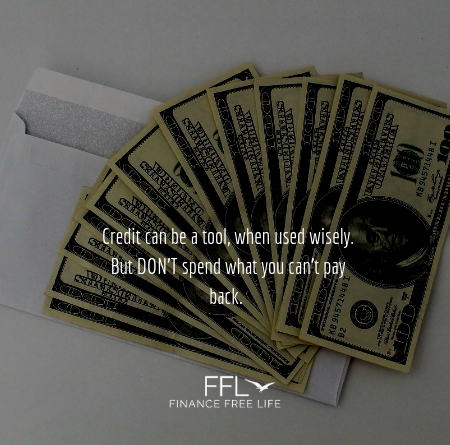Using Credit Wisely Part 2: Loans
When it comes to credit, loans are one of the most common types found. We have loans for cars, houses, education, and even personal loans which require no collateral. Let’s talk about loans and how they can be a good thing, or a bad thing, in your financial health.
The most important thing to remember, really with all types of debt, is don’t spend more than you make. Period. Using credit to expand your standard of living is not a healthy way to use credit. Using credit, however, to enhance your finances in a healthy way.
1. Protecting your savings/bank account
One way to use credit is to protect the money you currently have saved – meaning, although you have enough money in your accounts, you can use credit to avoid taking a big hit on your account in one shot. Instead, you can use the loan and purchase your item, and then pay off the loan with the money you have saved up after a certain period of time.
In order to maximize this, you need to calculate your break-even point with interest. Let’s say you have a $15,000 loan, at an interest rate of 5.25% for 60 months. The minimum payment would be $284.79, with total interested paid being $2,087.40. Let’s say you purchased this from a dealership, who offered $1000 rebate for financing a vehicle. So, you need to ensure that your interest paid does not exceed that $1000 off your vehicle.
By extending the loan to 60 months, reducing your payment allows for more flexibility in the budget to pay the car down. With an extra $500 per month, the interest drops to $698.71 and a payoff time of 21 months. Any other payments you make, like the money previously saved, can bring down the pay down date.
This is just one benefit of using a loan, wisely.
2. Financial Necessity
This scenario is not preferred, but it can be necessary. For instance, when I was 18, my car died. I had been saving for a car, but only for a few months, up to $1500. My plan was to save enough to buy a car outright, but I couldn’t afford it yet. So, I sold my dead car for $500, and put $2000 down on a brand new car. Again, not a preferred scenario, but it was necessary for me to get a vehicle, to drive to college, to work, to church, etc.
In these situations, it is good to have a plan. First, don’t buy brand new. Buy a stable, used car. And calculate the overall cost to you – your loan payment, the interest paid, etc. Make sure you understand what is available in your budget, so you know how much of a payment you can afford. And remember, it’s about using the loan as a tool, not as a way to avoid paying for it. Pay down the loan as quickly as possible.
3. Build Credit
The final way to use car loans in a healthy way is to build credit. A loan is a great way to establish credibility and regular payments. But again, do not use a vehicle loan to purchase more than you can afford to pay back. A good rule of thumb for this is to not let yourself buy too much, is to not let your total car expenses exceed 10% of your overall income.
By making regular payments, and even paying the loan early, you can build a solid credit score pretty quickly.
There you have it! These tips can help you use credit wisely. But always remember, 1. do not spend more than you make, 2. do not exceed 10% of your total income on monthly vehicle expenses, and 3. never buy brand new, it is not wise.

